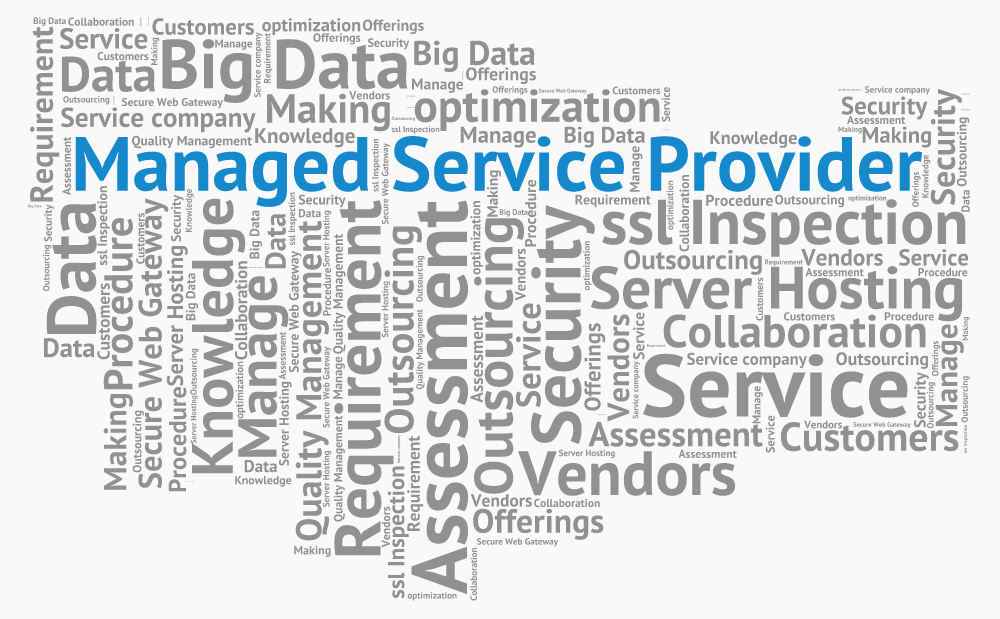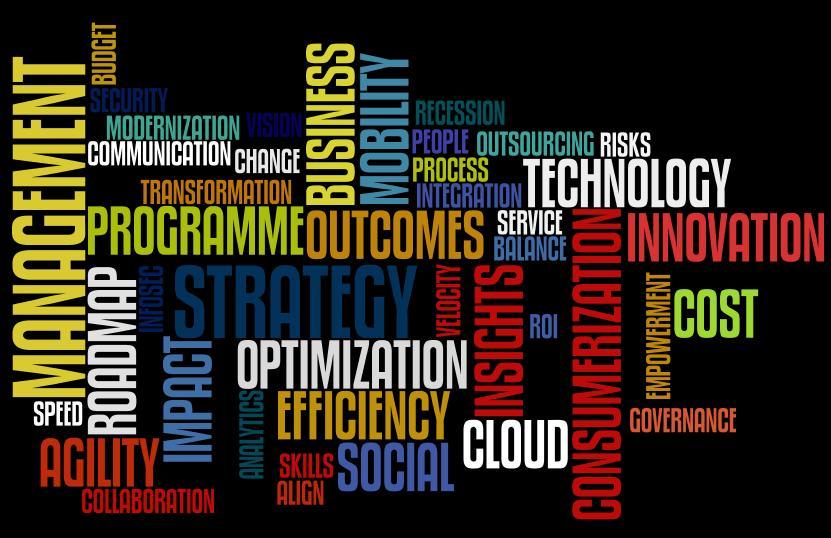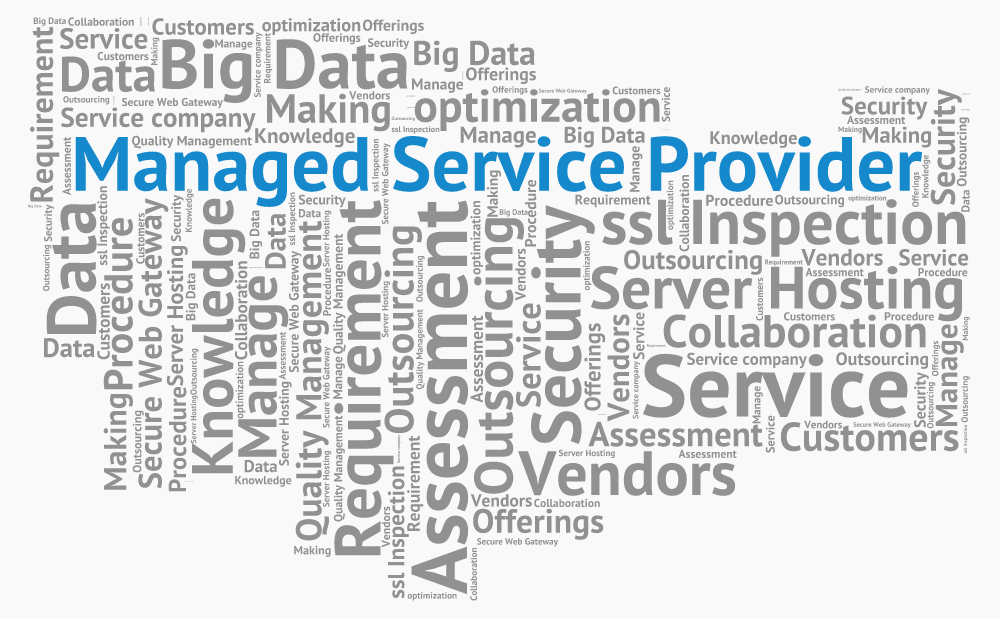The IT function continues to question how to manage more demand for services among the increasing complexity, with limited resources and experience. The pressure on the IT continues while companies are faced with fixed budgets or increasing reduced and increase expectations of IT to create value and business innovation.
For this reason, organizations IT cannot do it alone. They are seeking trusted IT services to help them reduce the cost, manage complexity, ensure desired levels of availability, maintain frontline techniques and incorporate technological innovation.
The potential benefits of managed services are achieved only if a suitable supplier is chosen, who you can demonstrate the ability to provide knowledge, processes, and resources to overcome their internal capabilities. When evaluating providers of managed services, you can consider the following 10 criteria to make an informed decision.
Knowledge and Expertise
Any managed service provider should, at least, have the knowledge that goes beyond conventional management and operating system availability and maintenance. Check the level of knowledge related to management changes, virtualization, high availability, middleware and databases data, multiple network technologies, integration platform, mobility, security and, of course, cloud technologies.
Ask about scalability and availability of staff to establish specialized techniques, how to organize and share information with the best-approved practices. Similarly, a managed service provider should have extensive experience in all delivery models, including not only managed services and cloud but also conventional and IT strategic outsourcing. Thus, the provider can help customers achieve a structured multi-strategy (internal, managed services, outsourcing, and cloud) to meet the individual needs of the company.
Technology-based Approach
Find out if the service provider has a precautionary approach to the problem and the improvement plan. Look for a provider that goes beyond the little monitoring and management of the device. For example, the provider can use sophisticated technologies such as advanced analysis to boost the prevention of incidents through patterns analysis of failure on all platforms and processes, providing visibility within the areas for the client and improvement of the service provider.
The provider should employ the sophisticated technology of secondary system in all managed services offered. It can provide capabilities such as the complex mechanisms of alert, classification and prioritization of tasks, and scaling and repair incidents. Find out how much the service provider uses automation to reduce human intervention and improve quality and productivity.
Conform to Industry Best Practices
The key to a reliable IT infrastructure and high availability is to optimize IT management. A vendor service should employ industry best practices to manage their IT resources to adapt the management of IT services. They include problem management, incident cases, change, configuration, inventory, capacity and performance and creating reports. They are also critical areas to investigate best practices make the transition from an internal management system to the provider.
Consolidated Service Visibility
Your provider services must be willing to share examples of policies and process documentation and explain how it played through multiple delivery centers. A service provider should have a knowledge management system that allows the personal access to historical information problems and solutions from anywhere.
It is also important, the means by which the service provider provides visibility into the strength of its infrastructure and the operation of its managed services. Look for a secure web-based portal that consolidates related services within a single panel with real-time service visibility and online tools to manage services.

Support Multi-environments
Current infrastructures are traditionally heterogeneous environments comprising products network, hardware, and software provided by a variety of distributors. A service provider should have a minimum proven experience in multi-environments and especially collaborate with distributors leaders to ensure availability and updated visibility into product development routes and new technologies. A right service provider should play a professional trusted advisor role, helping you choose technologies that would best suit your business.
Providing Consistent Services
Choose a managed services provider with a worldwide capacity that can help to position companies of all sizes to grow and expand in today’s global economy. Global delivery capabilities offer many advantages, including a rapid deployment in new locations, the ability to effectively manage client projects covering operations in many countries, local language support to subsidiaries or branches, and location of resources and data within the country to address legal requirements and regulatory requirements. Check if the service provider has standard delivery processes in all places and how they organize and communicate teams among them.
Performance Based Service Level Agreements
A significant advantage of the managed services is that the responsibility lies with the supplier performance services. Your priority should be on what the service provider provides more than how the service is provided, which allows the supplier to innovate, improve service delivery and reduce costs.
In turn, the service provider should be willing to commit contractually to meet their needs regarding service and support these commitments to economic sanctions or other compensation if these service level agreements are not maintained.
Comprehensive Portfolio of Managed Services
Since the needs of your business and IT are in continuous change, you need the flexibility to add managed services without unnecessarily increasing costs and complexity. Many organizations have realized that fragmentation services, using numerous managed services can be quite complicated and expensive.
To ensure flexibility in the future, make sure any potential supplier offers a complete managed solution services, from infrastructure management to the managed security, resilience, mobility and other IT services for managed hosting and cloud. Moreover, look for a provider that offers you flexibility such as to enable it to retain its current equipment and even their current processes.
Technology Foresight
With the increasingly frequent strategic partnerships, is essential to consider the impact that relations procurement can have, not only in the business results but also in the primary business model and corporate culture of the company. If innovation and transformation are essential elements in its strategy of activities, what can make a Managed Services supplier?
Do they have the knowledge or exclusive experiences that bring clarity to the future technological or market changes? What competitive advantages could the provider bring? How it can help the experience, assets and coverage provider and network of partners to develop new business models or grow into new markets?
Reputation and Financial Stability
Whether you are thinking short term as first steps into managed services or if you are looking long-term strategic relationship, prospecting of financial stability is with the provider is critical. It is worth to consider the experience; services offered, and opinions provided by analysts and specialized in IT and business press.
DedicatedSolutions goals are clearly defined as per the above top ten criteria. We want to deliver the best service to our customers while keeping the costs for our clients as little as possible. Through the combination of Tier III & Tier IV data center facilities, the ability to offer our customers multiple 10 Gig pipes at each location and only providing the best hardware possible, we can truly offer a 99.9% uptime – guaranteed.
Our staff continually strives to serve you with the best possible support. All our facilities have 24×7 staffing – whether it be network technicians, system administrators or support members. Besides the uptime, we also guarantee and warrant you that you will have unlimited bandwidth with our unlimited solutions.




